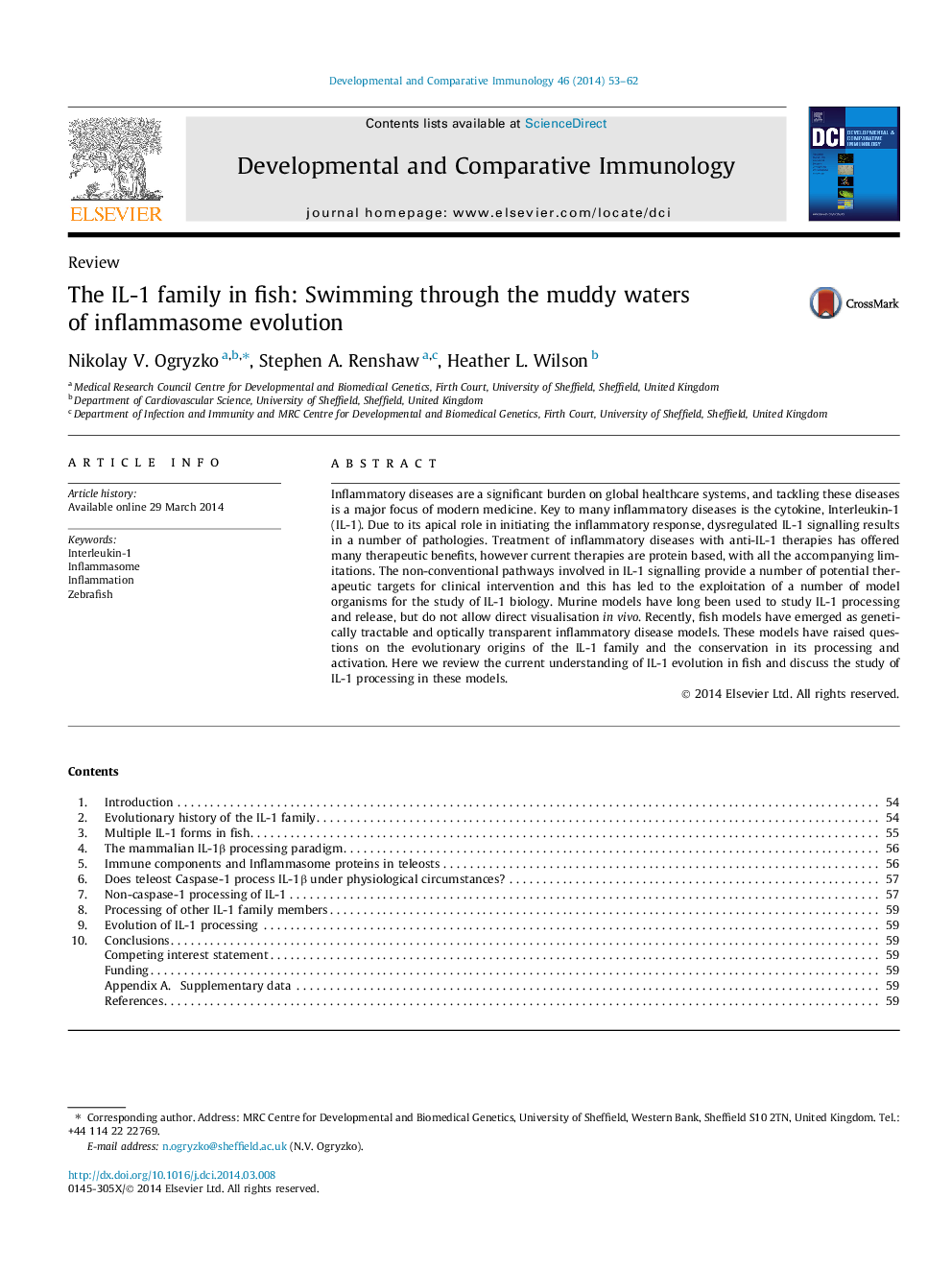| Article ID | Journal | Published Year | Pages | File Type |
|---|---|---|---|---|
| 2429029 | Developmental & Comparative Immunology | 2014 | 10 Pages |
•IL-1 structure and expression is conserved in evolution.•Fish have multiple IL-1 loci, but lack IL-1 family expansion.•Fish IL-1 is proteolytically activated.•Caspase-1 dependence of IL-1 cleavage differs between fish lineages.
Inflammatory diseases are a significant burden on global healthcare systems, and tackling these diseases is a major focus of modern medicine. Key to many inflammatory diseases is the cytokine, Interleukin-1 (IL-1). Due to its apical role in initiating the inflammatory response, dysregulated IL-1 signalling results in a number of pathologies. Treatment of inflammatory diseases with anti-IL-1 therapies has offered many therapeutic benefits, however current therapies are protein based, with all the accompanying limitations. The non-conventional pathways involved in IL-1 signalling provide a number of potential therapeutic targets for clinical intervention and this has led to the exploitation of a number of model organisms for the study of IL-1 biology. Murine models have long been used to study IL-1 processing and release, but do not allow direct visualisation in vivo. Recently, fish models have emerged as genetically tractable and optically transparent inflammatory disease models. These models have raised questions on the evolutionary origins of the IL-1 family and the conservation in its processing and activation. Here we review the current understanding of IL-1 evolution in fish and discuss the study of IL-1 processing in these models.
